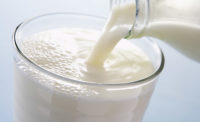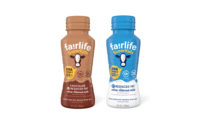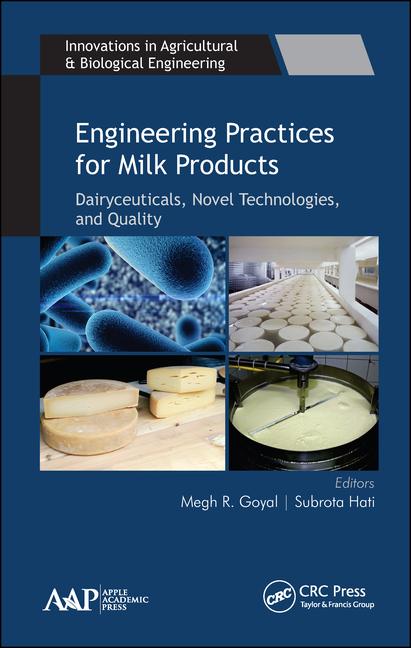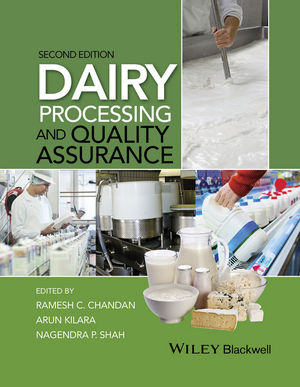17 tests for high-quality dairy products

Editor's note: This article is a long-awaited updated to the article on www.dairyfoods.com titled "The 16 tests you need to perform on raw milk, finished products," which first appeared on June 16, 2016, but remains incredibly popular today. Please use this as a new guide.
The quality of dairy products is of the utmost importance to today’s consumers, and achieving high-quality dairy products requires a systematic approach that encompasses key testing criteria for raw, processing environment, in-process, and pasteurized dairy products. Below are key parameters that are critical to ensuring consumers have great tasting, long lasting dairy products.
Test 1: Total Bacteria Count (TBC), also known as Standard Plate Count (SPC), or Aerobic Plate Count (APC). Sometimes approximated using a Direct Microscopic Count (DMC), but often measured using an automated flow cytometry approach (e.g., Bactoscan). The total number of bacteria in raw milk is one of the most important process control parameters measured and is an overall indicator of microbiological quality and hygienic production practices. High quality raw milk should have a TBC less than 5,000 cfu/mL.
Test 2: Somatic Cell Count (SCC), a measure of the leukocytes present in raw milk and serves as an indicator of the health status of the herd when measured from the bulk tank. High SCC is associated with reduced cheese yield, as well as flavor, odor, and body defects in a number of processed dairy products. Bulk tank SCC should remain below 200,000-250,000 cells/mL, although many producers consistently achieve below 150,000 cells/mL.
Test 3: Sensory/organoleptic characteristics allow for the identification of significant raw milk issues. Receivers should lift the lid on the dome of a tanker the first time and quickly evaluate the odor of the milk. An option other than tasting raw milk is to lab pasteurize and quickly chill for tasting.
Test 4: Other microbiological monitoring tests may be used periodically and should focus on parameters that have a direct impact on finished product quality. For example, sporeforming bacteria are important spoilage organisms in a number of processed dairy products including fluid milk, some cheeses, and final products that used dry dairy ingredients. Monitoring for spores in bulk tank raw milk to establish a baseline of key organisms relevant to the finished product being manufactured, allows for deviation detection from that baseline during routine monitoring.
Test 5: Troubleshooting tests may be used when process control parameters (e.g., TBC and SCC) are out of the expected range. These tests include the Preliminary Incubation (PI) count that enriches for groups of bacteria that grow well at low temperatures, the Laboratory Pasteurization Count (LPC) that selects for thermoduric bacteria in raw milk, and the Coliform Count (CC).
Test 6: The legal maximum temperature of raw milk is 45 F. Milk transported at lower than 45 F, and ideally at 39 C, will ensure that groups of bacteria that grow at low temperatures do not have an opportunity to increase considerably. The higher the temperature, the more bacterial growth. Control and monitor temperature throughout the facility to meet regulatory requirements and quality specifications.
Other necessary tests
Test 7: Added water is considered adulteration. Cryscope testing helps identify when water was added to raw milk. This test helps to prevent additional concerns that may come with water, such as chemical and biological hazards. This is a useful test for fluid milk finished product, as well as, to ensure additional water was not added during manufacturing.
Test 8: Milk composition tests should be conducted throughout the process to ensure control on fat, as well as to meet standards of identity. Butterfat, total solids and protein are the big three. Chemical tests are very accurate, but they take time. Electronic equipment enables facilities to obtain fast and accurate results.
Test 9: Aflatoxins can be transmitted into raw milk from contaminated feed. A hazard analysis and supplier control program will indicate frequency of monitoring for aflatoxin in raw milk, especially in geographic areas where risks of contaminated feed are high.
In-plant, in-process tests
Multiple points within dairy manufacturing should be monitored, yet some of the most critical are those within the environment. Improperly cleaned equipment is a major cause of product contamination.
Tests 10 and 11: Testing for coliform and aerobic plate count (APC) using surface swabs/sponges is a common and easy way to validate cleaning and sanitation procedures are effective. ATP swabs can then be used daily during start-up processes to verify cleaning and sanitation was effective.
Test 12: Dairy in itself is one of the Big 8 allergens. If your facility is using another allergen, an allergen control program that validates and verifies effectiveness of cleaning is required within the Preventive Controls for Human Food rule. To validate that the cleaning and sanitation process is effective in removal of the allergens, the use of an allergen specific test is indicated. Protein swabs can then be used daily during start up processes to verify the cleaning and sanitation was effective in removal of the allergenic protein.
Tests 13 and 14: Environmental monitoring is a critical process. If your facility manufactures dry dairy powders, monitor for the presence of Salmonella and Cronobacter. For all other dairy manufacturing, including ice cream, fluid milk, etc., monitor the environment for the presence of Listeria.
In-plant, finished product testing
Test 15: At a minimum, sensory/organoleptic characteristics should be completed on all dairy products. For fluid milk, the suggested frequency of testing includes freshly bottled off the line, 24 hours after bottling, at end of code and a shelf-life check at 14 days following storage at 45 F.
Test 16: Microbiological tests performed on “fresh” fluid product within the first 24 hours of manufacturing include SPC and coliform to ensure compliance with Pasteurized Milk Ordinance (PMO) requirements. For fluid milk, also performing a stress test to detect post-pasteurization contamination should be used. This method involves incubating fresh product in the original container at 70 F for 18h then plating on both standard methods agar, as well as on media to detect total Gram-negative bacteria (as described in Test 17).
Test 17: Indicator organism testing is critical to detecting unhygienic conditions during process, in particular after pasteurization. While coliforms are the traditional indicator organism used in the dairy industry, evidence suggests that in fluid milk a better indicator of hygienic processing conditions is actually a total Gram-negative count. Gram-negative bacteria include coliforms, as well as the most common post-pasteurization contaminant, Pseudomonas. Tests for total Gram-negative bacteria include the traditional microbiological method, Crystal Violet Tetrazolium Agar, but a more accessible test for many processors is the modified Coliform Petrifilm method which involves plating milk on Coliform Count Petrifilm, incubating for 48 hours (as opposed to 24 hours for CC), and counting all colonies, not just those with gas production.
In other products, appropriate indictor organisms beyond coliforms vary. For example, in cultured dairy products, yeast and mold or Enterobacteriaceae are better hygiene indicators. Indicator organisms should be chosen to target the specific product being manufactured. In the end, indicator organisms are critical to identifying unhygienic conditions and reacting quickly to resolve issues leading to the contamination.
While other tests may be used as substitutes or additions to those outlined above, you must tightly control the raw milk, processing, environment and finished product to ensure safety and quality.
Nicole Martin, Ph.D., is assistant research professor in Dairy Foods Microbiology; Associate Director, Milk Quality Improvement Program, Department of Food Science, College of Agriculture and Life Sciences, Cornell University.
Looking for a reprint of this article?
From high-res PDFs to custom plaques, order your copy today!









